
Hand Trucks vs Dollies
Shop All Hand Trucks and Dollies
A hand truck features a vertical, L-shaped design with an upright handle, two wheels, and a small bottom ledge whereas a dolly has a raised, flat platform that typically has four wheels. A hand truck is best suited for moving small and heavy items or moving small items in bulk and a dolly is best for moving larger, bulkier items.
A hand truck is a type of transportation equipment that features a vertical, L-shaped design with an upright handle, two wheels, and a small bottom ledge. Hand trucks are best suited for moving small and heavy items or moving small items in bulk without having to lift the items by hand.
When purchasing a hand truck, it's important to consider how it will be used, how much it'll be used, and in what environment it will be used. The type of hand truck you may need will depend on the load capacity you're looking to transport. Always check a product's weight capacity before purchasing to ensure you're buying the best unit for your needs. Below we list the different types of hand trucks that are used to move materials so that you can find the best hand truck for your needs.
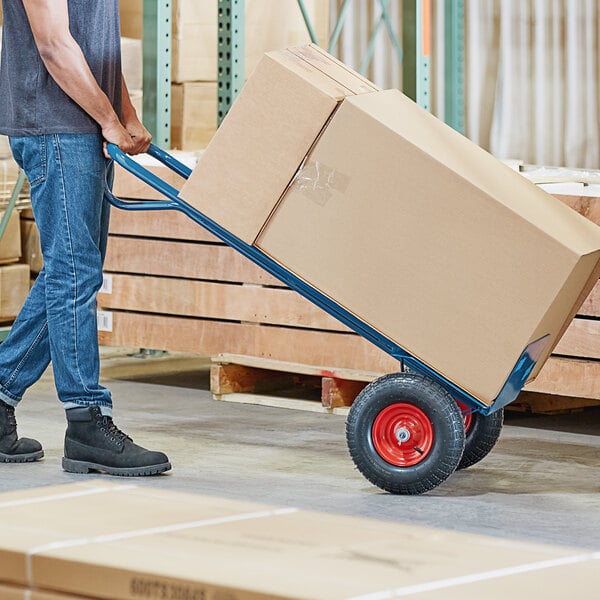
Upright Hand Truck
An upright hand truck, which is often called a utility dolly, is your traditional, general-purpose hand truck and it works best for moving items short distances. It features a strong metal frame and typically has a single, rounded handle at the top of the unit. A drawback of a general-purpose hand truck is that most of them do not feature a foldable design, so they can be awkward to store out of the way.
Upright Hand Truck Uses: Moving boxes, crates, small furniture, and appliances
Upright Hand Truck Capacity: 80 lb. to 1,500 lb.
Where to Use an Upright Hand Truck: Warehouses, delivery services, and catering companies
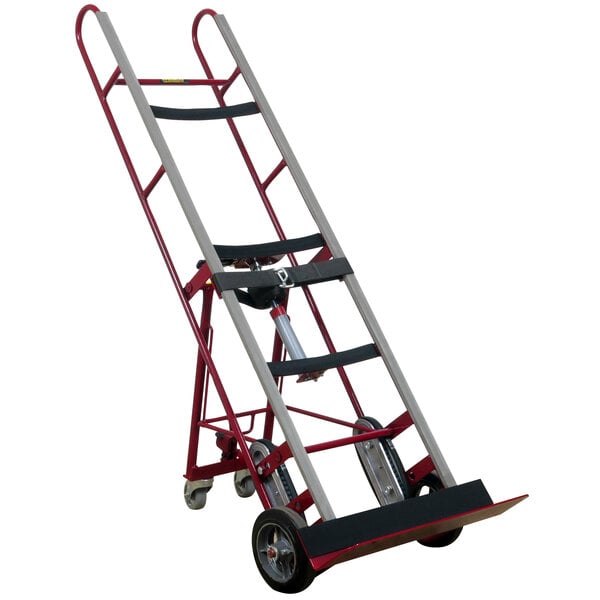
Appliance Hand Truck
Appliance hand trucks, which are often called appliance dollies, are specifically designed for moving large, heavy appliances, such as refrigerators, freezers, water heaters, washing machines, and vending machines. They feature heavy-duty straps and side rails to secure the appliance in place.
Appliance Hand Truck Uses: Moving large, heavy appliances, boxes, and equipment
Appliance Hand Truck Capacity: 250 lb. to 1,200 lb.
Where to Use an Appliance Hand Truck: Distribution centers, warehouses, delivery services, and moving companies
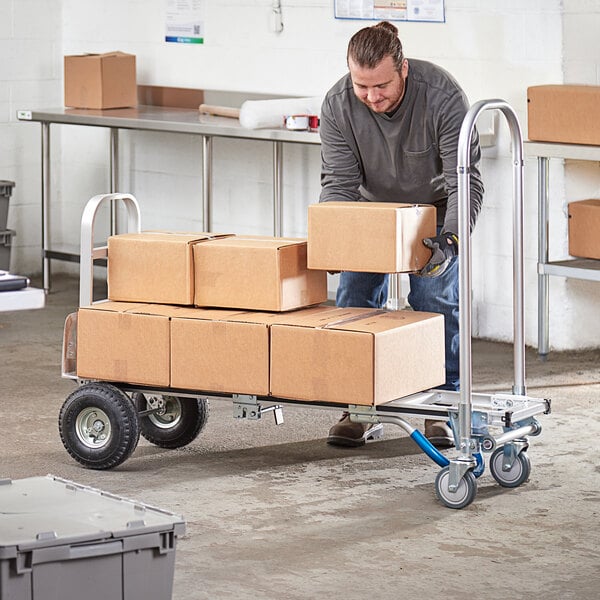
Convertible Hand Trucks
Convertible hand trucks can switch between two- and four-wheeled support to provide an upright and platform hand truck all-in-one. Use it upright on 2 wheels for moving tall, slender objects or lay it completely horizontal and use all 4 wheels for especially big, bulky loads.
Convertible Hand Truck Uses: Moving boxes, crates, and raw materials
Convertible Hand Truck Capacity: 100 lb. to 1,250 lb.
Where to Use a Convertible Hand Truck: Warehouses, delivery services, and catering companies
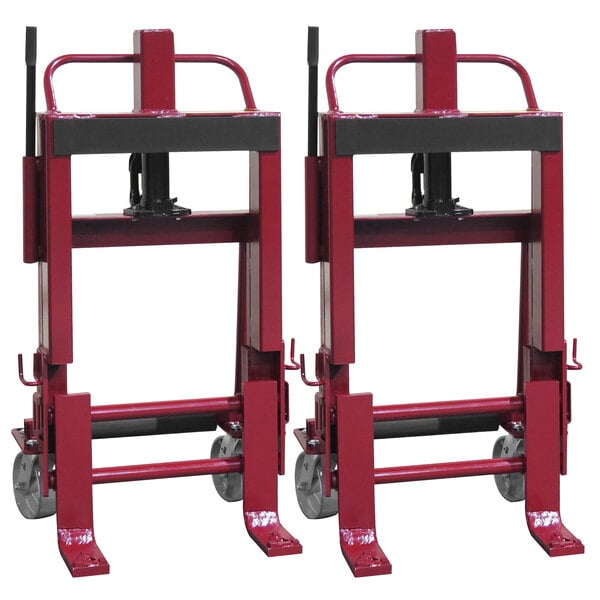
Machinery Movers
Machinery movers are designed to safely and easily lift and transport heavy industrial equipment from one location to the next. Machinery movers include an ergonomic lifting system to lift and lower cargo onto the platform or fork, and they typically come in pairs for a two-person operation. There are either manual lift or hydraulic lift options, and hydraulic lift systems require less physical effort to operate than manual lifting systems.
Machinery Mover Uses: Moving heavy industrial equipment, vending machines, and irregular-sized loads
Machinery Mover Capacity: 1,300 lb. to 10,000 lb.
Where to Use a Machinery Mover: Warehouses, manufacturing plants, and other industrial facilities

Motorized Hand Trucks
Motorized hand trucks make it easier and quicker to move heavy, bulky loads. Some feature stair-climbing technology and most include an automatic brake that activates when the throttle is released for maximum safety as well as straps and hooks to secure the cargo to the cart. If you need to move loads upstairs, motorized hand trucks are the best hand truck for steps since the motor can help propel the hand truck upwards and lessen the burden on your back.
Motorized Hand Truck Uses: Moving heavy boxes, drums, pails, and barrels
Motorized Hand Truck Capacity: 600 lb. to 3,500 lb.
Where to Use a Motorized Hand Truck: Delivery services, event rentals, and catering companies
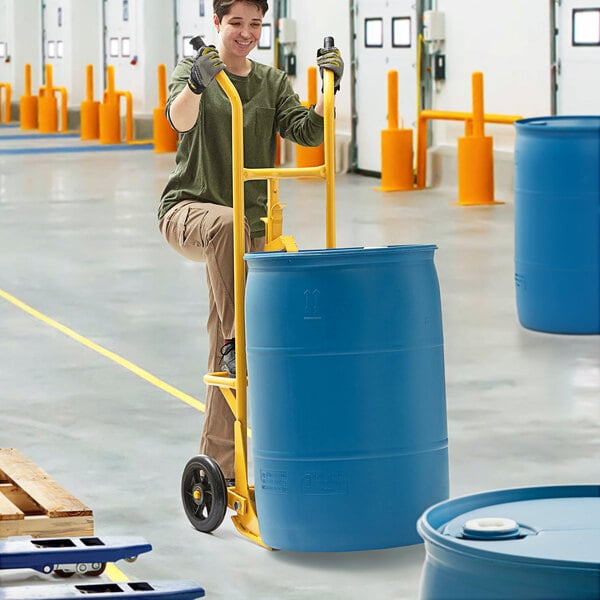
Drum Truck
Drum trucks make transporting heavy drums throughout your manufacturing plant or warehouse simple and safe. They come with two or four wheels and some feature a drain stand to make draining drums easier. Pail trucks are a variation of drum trucks that feature a supportive frame and hook that make it easy to load, tilt back, and securely move kegs, pails, buckets, or barrels. They are ideal for breweries, restaurants, and bars.
Drum Hand Truck Uses: Moving drums, pails, barrels, kegs, and other large cylindrical containers
Drum Hand Truck Capacity: 250 lb. to 1,200 lb.
Where to Use a Drum Hand Truck: Warehouses, distribution centers, manufacturing facilities, breweries, and chemical plants
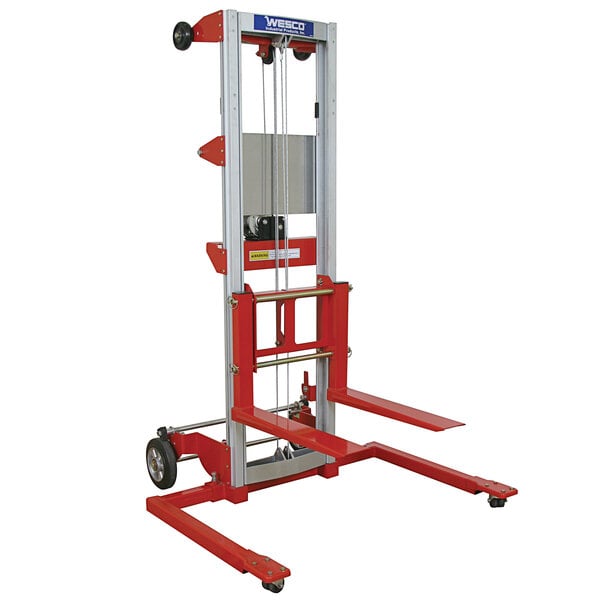
Winch Lift Truck
Winch lift trucks feature a manual winch crank and either a fork or a large platform for the simple lifting and lowering of objects. A winch is mounted to the back of the truck and its cable runs over the top of the cart and down to the platform or forks to easily lift items. They can be used to help load items on top of other goods or onto storage racks in your warehouse.
Winch Lift Truck Uses: Moving boxes, crates, and bins
Winch Lift Truck Capacity: 220 lb. to 500 lb.
Where to Use a Winch Lift Truck: Warehouses, manufacturing plants, and other industrial applications
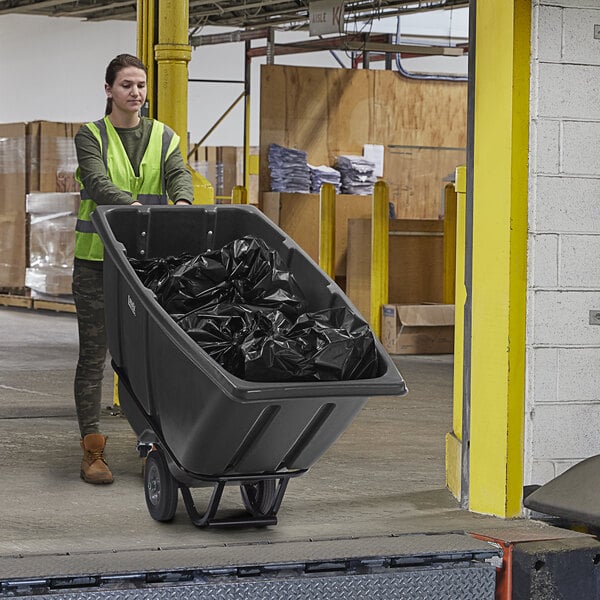
Tilt Trucks
Tilt trucks make it easy for a single person to transport heavy loads, and their large capacities make them perfect for use in high-volume settings. The ergonomic, durable design is perfect for transporting a wide range of heavy items including waste and industrial materials. Tilt trucks feature two large rear load wheels and two smaller-sized swivel casters in the front for easy maneuverability throughout your facility. Plus, their heavy-duty plastic design makes them easy to clean with a simple hose down at the end of use.
Tilt Truck Uses: Moving and disposing of waste, recycling, industrial materials, and raw materials
Tilt Truck Capacity: 300 lb. to 2,300 lb.
Where to Use a Tilt Truck: Warehouses, manufacturing plants, and other industrial facilities
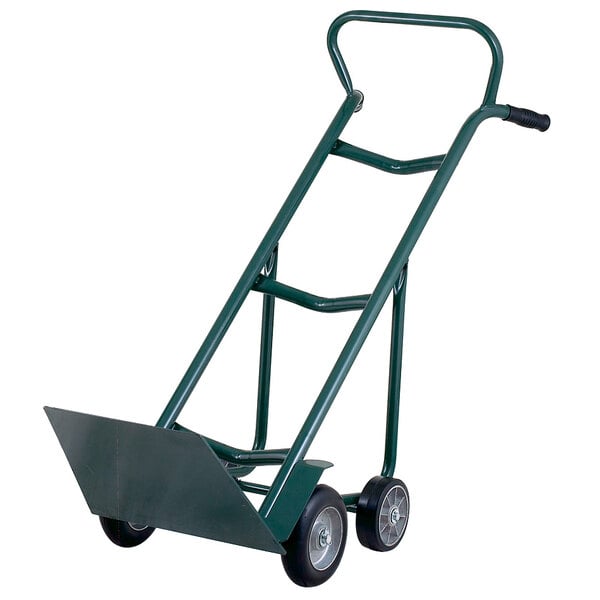
Pallet Hand Truck
Pallet hand trucks are designed to streamline loading and unloading materials onto pallets. Compared to using a pallet jack, which utilizes a hydraulic pump and two forks to lift and transport pallets and is designed to support heavier weights, pallet hand trucks are better suited for lighter loads and tighter spaces.
Pallet Hand Truck Uses: Moving boxes, crates, and bins
Pallet Hand Truck Capacity: 900 lb. to 1000 lb.
Where to Use a Pallet Hand Truck: Warehouses, manufacturing plants, and other industrial applications
Appliance Dolly vs Utility Dolly
Despite the names, both appliance dollies and utility dollies are hand trucks. An appliance dolly is specifically designed for moving large, heavy appliances and features heavy-duty straps and side rails to secure the appliance in place. A utility dolly is a standard, general-purpose hand truck that is useful for moving boxes, crates, and small furniture and appliances. A utility dolly typically does not come with straps or hooks to secure items.
How to Use a Hand Truck
To use a hand truck, slide the hand truck's bottom underneath the item that needs to be moved. Once the item is securely on the hand truck's bottom ledge, tilt the truck backward until the weight is distributed over the wheels to allow the item to rest up against the back of the truck while your staff transports it. This helps take the weight of the load off of the operator to prevent injury. While most hand trucks are manually-operated, some are motorized to help with especially heavy loads, uneven ground, and climbing stairs.

If you are transporting a bulky or heavy load, you may need a hand truck that includes added features, such as a belt tightener, chime hook, or rachet, to ensure easy, safe transportation. Check out the Features filter in our hand truck category to search for trucks with special features that will help with a specific task.
What Is a Dolly?
A dolly is a type of transportation equipment that features a platform with wheels. The platform provides a higher level of stability and mobility than hand trucks, so you don't have to worry about items falling off. This makes larger or bulkier items more suitable for a dolly. Because of the dolly's raised platform, items will need to be lifted off the ground and onto the dolly manually or with a device.
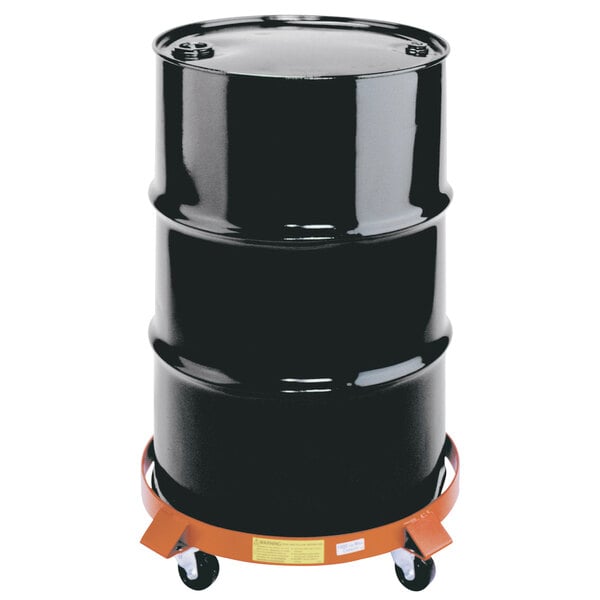
Drum Dolly
A drum dolly is made from heavy-duty metal and features raised sides to transport 30- or 55-gallon steel drums with ease. Commonly used to transport oils, fuels, chemicals, and dry goods, this type of dolly is great to have on hand for both industrial and commercial applications. Compared to drum trucks, drum dollies are easier to maneuver and do not require the containers to be leaned back and balanced. However, the drums will have to be manually lifted or lifted with the help of a device.
Drum Dolly Uses: Moving drums and overpack drums
Drum Dolly Capacity: 900 lb. to 2,000 lb.
Where to Use a Drum Dolly: Warehouses, manufacturing plants, and other industrial facilities
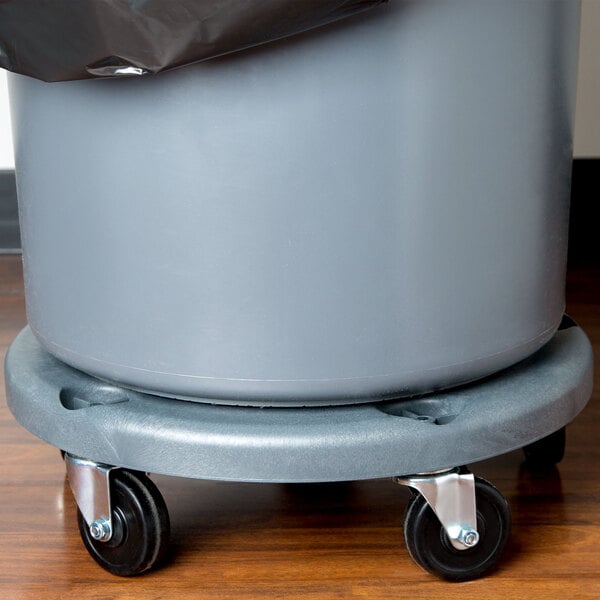
Trash Can Dolly
A trash can dolly allows staff to comfortably maneuver full trash cans and recycling cans around your establishment. It can help minimize cleanup time at the end of shifts by making it easier for your staff to transport full cans from your facility to the dumpsters. Trash dollies are slim in design to make them easy to maneuver through tight and narrow spaces.
Trash Can Dolly Uses: Moving trash and recycling cans
Trash Can Dolly Capacity: 100 lb. to 900 lb.
Where to Use a Trash Can Dolly: Warehouses, industrial plants, restaurants, and healthcare facilities

Chair Dolly
Chair dollies, or chair carts, are designed to efficiently and conveniently store and transport chairs. Different types of chair dollies can be used to transport multiple folding chairs, stackable chairs, and barstools at once, as well as dollies that can hold both chairs and tables for your convenience.
Chair Dolly Uses: Transporting folding, stackable, and barstool chairs
Chair Dolly Capacity: 200 lb. to 1,375 lb.
Where to Use a Chair Dolly: Event rentals, banquet halls, and catering services
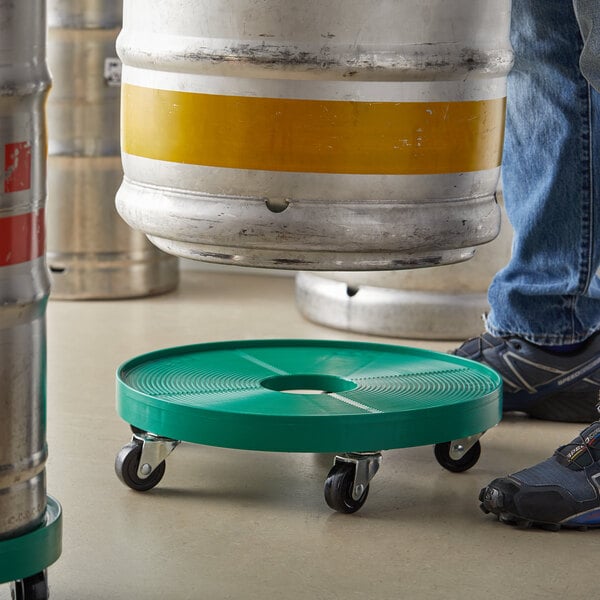
Keg Dolly
A keg dolly can help you efficiently transport full kegs in your manufacturing or distribution facility. It is also great for bars and restaurants to have on hand to make transporting kegs from the walk-in cooler to your bar during peak times a quick and easy task for your staff.
Keg Dolly Uses: Moving kegs and barrels
Keg Dolly Capacity: 400 lb. to 500 lb.
Where to Use a Keg Dolly: Breweries, restaurants, bars, and catering services
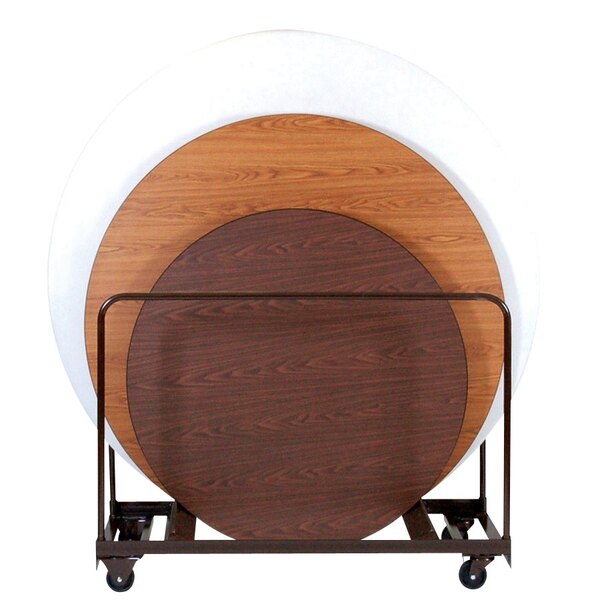
Table Dolly
Table dollies are designed to efficiently and conveniently store and transport tables. Different types of table dollies can be used to transport multiple round, square, and rectangular tables at once that can be either flat stacked or edge stacked, as well as dollies that can hold both tables and chairs for your convenience.
Table Dolly Uses: Transporting tables of various sizes and lengths
Table Dolly Capacity: 5lb. to 2,000 lb.
Where to Use a Table Dolly: Event rentals, banquet halls, and catering services

Crate Dolly
A milk crate dolly comes in handy when transporting goods from your receiving area to your kitchen. It features a square or rectangular shape and has four casters, making it easy to maneuver around tight corners and through smaller spaces. Crate dollies allow your staff to move larger quantities of product from the loading truck to the fridge at one time.
Crate Dolly Uses: Moving crates of milk and beverages, boxes of meat, and bins
Crate Dolly Capacity: 250 lb. to 10,000 lb.
Where to Use a Crate Dolly: Food manufacturers and distributors, grocery stores, restaurants, and bakeries
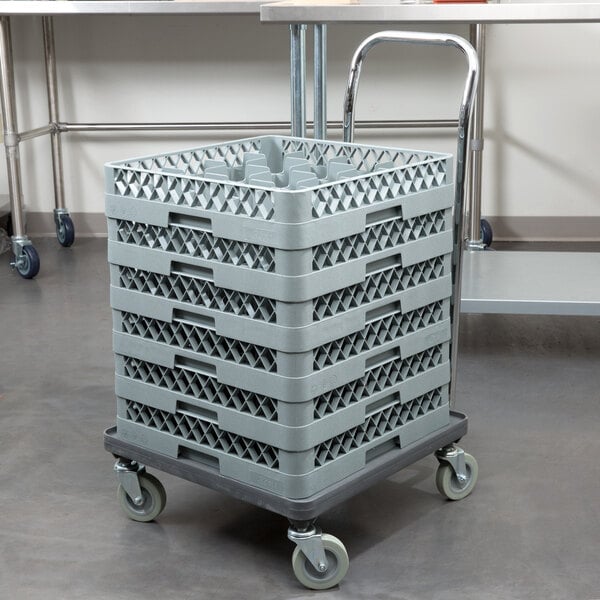
Glass Rack Dolly
Glass rack dollies allow you to easily stack racks of dishware or glassware on one portable unit. They feature an indented platform to securely hold glass racks and most are compatible with many popular glass rack manufacturers.
Glass Rack Dolly Uses: Storing and transporting clean glassware
Glass Rack Dolly Capacity: 130 lb. to 880 lb.
Where to Use a Glass Rack Dolly: Restaurants, bars, and tap rooms

Dish Dolly
A dish dolly, or plate caddy, makes it easy to store and transport a high capacity of dishes in one unit. A dish dolly typically has three or more compartments so that it can hold hundreds of dishes at a time to suit your demand. It can be used to keep washed dishes organized, or for placing at buffet tables for customers to take plates themselves.
Dish Dolly Uses: Transporting dishes in bulk
Dish Dolly Capacity: 180 dishes to 1,120 dishes
Where to Use a Dish Dolly: Restaurants, cafeterias, hotels, and catering services
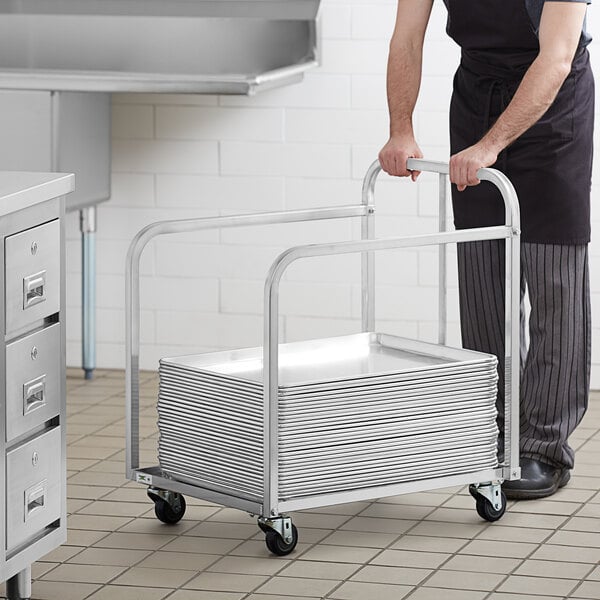
Sheet Pan Dolly
Sheet pan dollies are ideal for transporting stacked sheet pans or for transporting them in bulk from your dishwasher to your bun racks. They are also great for storing pans under tables to save space while they're not in use. Some sheet pan dollies feature an easy-to-grab frame and handle for quick maneuvering throughout your kitchen.
Sheet Pan Dolly Uses: Moving sheet pans
Sheet Pan Dolly Capacity: 30 pans to 200 pans
Where to Use a Sheet Pan Dolly: Bakeries, cafeterias, diners, and hotel

Insulated Pan Carrier Dolly
Insulated pan carrier dollies are designed to quickly and painlessly transport stacked food pan carriers. Some are even equipped with handles that make it easier to maneuver stacked food pan carriers. Typically insulated food pan carrier manufacturers will also have a compatible dolly to ensure the secure transport of their product.
Insulated Pan Carrier Dolly Uses: Transporting insulated food pan carriers
Insulated Pan Carrier Dolly Capacity: 80 lb. to 550 lb.
Where to Use an Insulated Pan Carrier Dolly: Restaurants, ghost kitchens, and catering services
How to Use a Dolly
Using a dolly may be a two- to three-person job at first. To get your object onto the dolly, tip it to one side and center the dolly underneath the object's bottom. Then lower the object gradually onto the dolly and you are good to start moving. Depending on the item, you may want to have a padded surface underneath the tipped side to protect it against damage.
Training your warehouse employees or service staff on how to properly transport items with a hand truck is important to reduce accidental workplace injuries. Read on to learn some safety tips to keep in mind when operating a hand truck.
- Use a hand truck that is appropriate for the job and the load to be carried.
- Stack items from heaviest to lightest.
- Never stack items so high that you cannot see where you're going.
- Secure any bulky, awkward, or delicate objects to the truck.
- Avoid walking backward as this can strain the back.
- Always maintain a safe speed to prevent injury or items falling off the truck.
- Always properly store hand trucks to ensure they don't become a potential hazard to anyone else or block material handling equipment.
It's important to check the wheel or caster material when purchasing your unit to make sure it will stand up to the task at hand. If you are going over various uneven surfaces, you will need wheels with greater shock absorption, whereas if you are indoors, you will need non-marking, quiet wheels. Below are some common hand truck wheel materials and their benefits.
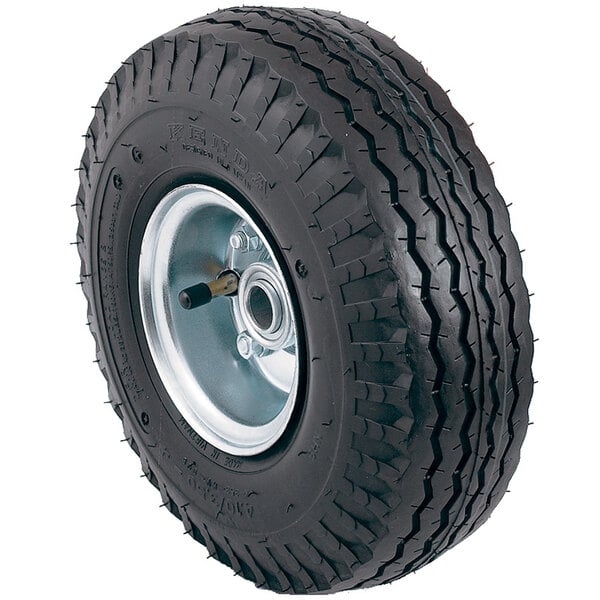
- Pneumatic wheels are filled with pressurized air for shock absorption and a smoother ride when going over loose and uneven surfaces and curbs.
- Semi-pneumatic wheels are partially filled with non-pressurized air for some shock absorption when going over uneven, bumpy surfaces and curbs.
- Mold-on rubber wheels eliminate flats and provide a cushioned, smooth, and quiet ride to protect floors.
- Microcellular foam wheels give comparable cushion and performance to pneumatic wheels, but they do not contain air and thus cannot go flat.
- Balloon cushion wheels eliminate flats and provide more bounce than solid rubber wheels.
Related Resources
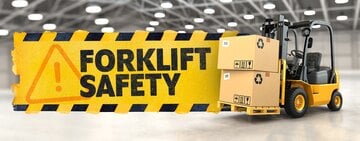
Forklift Safety
When it comes to keeping your warehouse safe , there are many factors to take into account. The busy and fast-paced warehouse environment can create many opportunities for accidents to occur, with one of the most common types being forklift accidents. In the article below, we'll investigate what you can do to promote forklift safety in your warehouse. Shop All Industrial Supplies Forklift Safety Tips Forklift accidents can result in serious injuries to your employees and damage to your workplace. The Occupational Safety and Health Administration (OSHA) has established several rules and regulations designed to keep employees safe. Below, we've compiled a list of tips to help you create a safe workplace and reduce the risk of forklift acciden
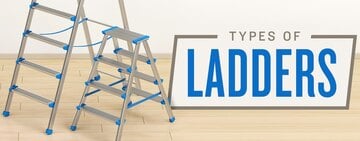
Types of Ladders
Ladders are a vital tool for simple repair jobs and everyday industrial use, allowing you to reach all corners of your establishment. However, choosing the right ladder for a job requires considering more than convenience. The wrong ladder with an incorrect duty rating or application can lead to potentially fatal accidents. Understanding the different types of ladders available and their applications, duty ratings, and features provides discernment on which ladders to use for your business or in various areas of your warehouse . Whether you're looking for a ladder for a specific use or buying an assortment of ladders to start your business, our guide on the various types of ladders on the market will help you make an informed purchase. Shop

Warehouse PPE Checklist
Once you have performed a hazard assessment of your facility , you will need to identify what PPE you need to supply for your warehouse workers. Providing your employees with the proper PPE equipment ensures they are protected against potential hazards and will help reduce the risk of injury in your workplace.
- Topics 1346
- Industrial 55
- Troubleshooting Guides 21
- Restaurant Management 128
- Bar Management 55
- Catering Tips 35
- Bakery Management 42
- Food Trucks & Concessions 49
- Advertising & Marketing 37
- Eco-Friendly Tips 11
- Facility Layout & Design 41
- Coffee Shop Tips 28
- Installation & Maintenance 51
- Janitorial & Pest Control 30
- Safety & Sanitation 88
- Startup Tips 104
- Menu Design 10
- Kitchen & Cooking Tips 81
- Hospitality Management 23
- Pizza & Sandwich Shop Tips 36
- Smallwares 37
- Food Prep 88
- Tabletop Items 17
- Disposables 22
- Calculators & Tools 6
- Consumables 52
- Warewashing & Laundry 18
- Cooking Equipment 90
- Food Storage & Refrigeration 51
- Beverage Equipment 34
- Office Supplies 6
- Resource Type
- In-Depth Articles272
- Buying Guides296
- How-Tos93
- Product Reviews77


